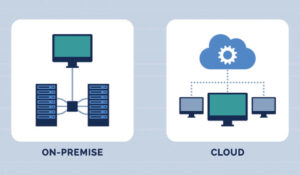Throughout 2020 and 2021, many contact centres felt the impact of a worldwide computer supply shortage. The world’s leading hardware manufacturers and suppliers shut down production during the initial stages of the pandemic, crippling an industry that was already under pressure due to a shortage of Intel chips.
The global emergency shift to a work-at-home model and the surge in hardware sales for domestic use for online schooling put supply chains under immense pressure.
This low-supply, high-demand bottleneck had organizations around the globe scrambling to find short-term solutions. Even industry leaders resorted to taking whatever hardware they could get their hands on.
As Teleperformance’s Procurement Global Strategic Director, Diana Monterrubio, explains: “We had agents on calls with illuminated LED gaming headsets due to supply chain difficulties.”
However, not all businesses were able to find alternatives, with many having to wait weeks, if not months, for their required hardware. As result, they were unable to scale in line with customer expectations, particularly towards the end of the year when seasonal demand peaked.
Consequently, they incurred a significant loss of revenue as 2020 ended.
Today’s Supply Issues
Flash forward to 2022, organizations face the same problems and will for the foreseeable future. Even if hardware production manages to ramp up, there are chronic shipping delays worldwide to contend with.
As Diana Monterrubio notes: “We are starting to see an industry that simply is not able to keep up with the demand for laptops and microchips and all of these things that we’ve never seen [shortages of] before.”
In any case, there is a strong argument that the industry needs to rethink its traditional approach to the agent hiring and enablement processes, which are typically hardware dependent.
Ongoing concerns such as rising CapEx, lengthy agent onboarding times, as well as device loss and recovery, continue to add to the cost of doing business in an industry with notoriously tight margins.
How are organizations supposed to navigate this unprecedented scenario with the global nature of modern supply chains?
Industry leaders like Diana Monterrubio and her team at Teleperformance have proven that there is a viable and beneficial alternative to hardware procurement.
How Does BYOD Solve Supply Issues?
BYOD has gained popularity recently because it negates the need for device procurement and significantly lowers logistical costs. Indeed, its benefits reach far beyond this for many businesses:
- Most people now have their own devices, meaning that scalability and agent onboarding times can be improved by avoiding logistical delays and supply issues.
- Organizations can be assured of device familiarity amongst the workforce. Ensuring that employees are comfortable with their devices is pivotal to hitting KPIs from the moment they start working. So not only is downtime from delivery not a factor, but productivity is increased.
- The logistics of deploying hardware make up 35% of the total cost when you factor in shipping and storage. BYOD can negate these costs entirely, this allows for faster scaling without the capital expense.
- By negating the need to order and ship devices, the reliance on suppliers is minimized, the supply chain for WaH is secured from future, recurring issues, like material shortages or fluctuating manufacturing costs.
BYOD is a secure and sensible option for many organizations.
The effects of the COVID-19 pandemic will continue to disrupt the world’s manufacturing and hardware capabilities for some time to come.
Author: Guest Author
Published On: 22nd Mar 2022
Read more about - Guest Blogs, ThinScale















